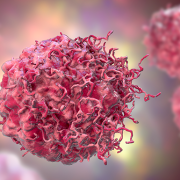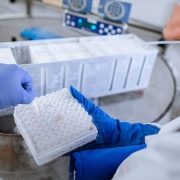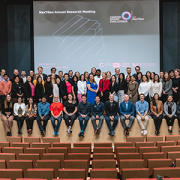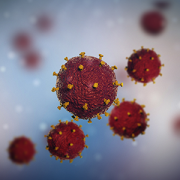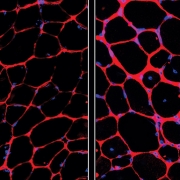Searching for the key to treating neuroblastoma tumors in kids
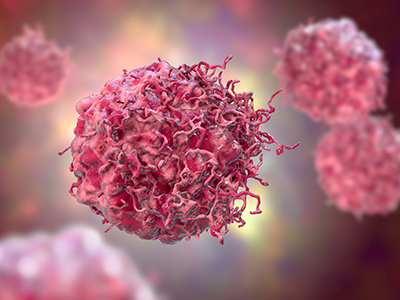
Jianhua Yang, Ph.D., has dedicated his research to finding the molecular mechanism of neuroblastoma development and is working to develop novel therapeutics.
There continues to be an urgent need to identify novel therapies for childhood cancers. Neuroblastoma (NB) is the most common malignant solid tumor in children and contributes to more than 15% of all pediatric cancer-related deaths. Despite strides made in chemotherapy treatment over the past 30 years, NB largely remains an incurable disease. That’s why Jianhua Yang, Ph.D., associate professor and research faculty at the Center for Cancer and Immunology Research at Children’s National Hospital, has dedicated his research to finding the molecular mechanism of NB development and is working to develop novel therapeutics to target molecules he and his team identify in the lab.
Q: What has driven you to do this research?
A: In order to design better and potentially more effective NB treatment approaches, we must further understand the mechanism that activates NB development. We don’t know what that mechanism is yet, and that’s what we’re working to unlock. I felt with my training in cell biology and immunology, I could use that background to help develop novel therapies.
The research is hard and can often times feel frustrating. But I feel I’m working on something that has the potential to make a huge difference. I tell the researchers I work with that you have to really believe in what we’re doing. We’re doing something very different. Before I moved to D.C. to join Children’s National, I sent a text to a former mentor to let him know I was joining the team here to continue my work. His reply said, “I’ve always had confidence in you,” and it’s that type of encouragement that drives me to keep going.
Q: What is your current focus in this area?
A: Specifically, we’re working on two targets right now:
- To define the role and regulation of CaM kinase-like vesicle-associated (CAMKV) in NB development and examining the therapeutic potential of CAMKV kinase inhibition for treating NB in pre-clinical models. We’ve found that CAMKV is highly expressed in NB tumor samples and its kinase activity is required for tumor growth. So, if we knock out this gene, tumor cells will die. We’re studying how it is being activated, and if we can find out what causes it, we can find a way to inhibit its activation. Targeting CAMKV is a novel concept for treating NB. CAMKV kinase inhibitors may serve not only as stand-alone therapies but also as effective adjuncts to current chemotherapeutic regimens treating this aggressive pediatric malignancy.
- To define the role and regulation of transmembrane protein 108 (TMEM108) in NB development and examine the therapeutic potential of TMEM108 functional blockade for treating NB in pre-clinical models. Evolutionarily, in human genome it has no other family member, it’s a loner. And if you knock it out in NB tumor cells, tumor cells will die. We’re learning how it functions through our basic research, which is quite difficult. But we’re thinking if we can find the antibody to bind to it and block its function, we could stop the tumor from growing or even cause the tumor to die.
Q: What excites you about doing this work within the Center for Cancer and Immunology Research?
A: At Children’s National, I’ll be able to combine my work with the incredible work in immunotherapy that Drs. Catherine Bollard and Muller Fabbri are doing. I’m excited to be here to have that strong collaboration with their labs to develop new therapies.
In the next 5 years, I feel we’ll be able to identify good blocking antibodies that we can then test combinations of to see how it blocks tumor growth. If we can find ways to combine that antibody therapy with traditional chemotherapy options, we can achieve a real cure for NB.
Learn more about the Center for Cancer and Immunology Research.


